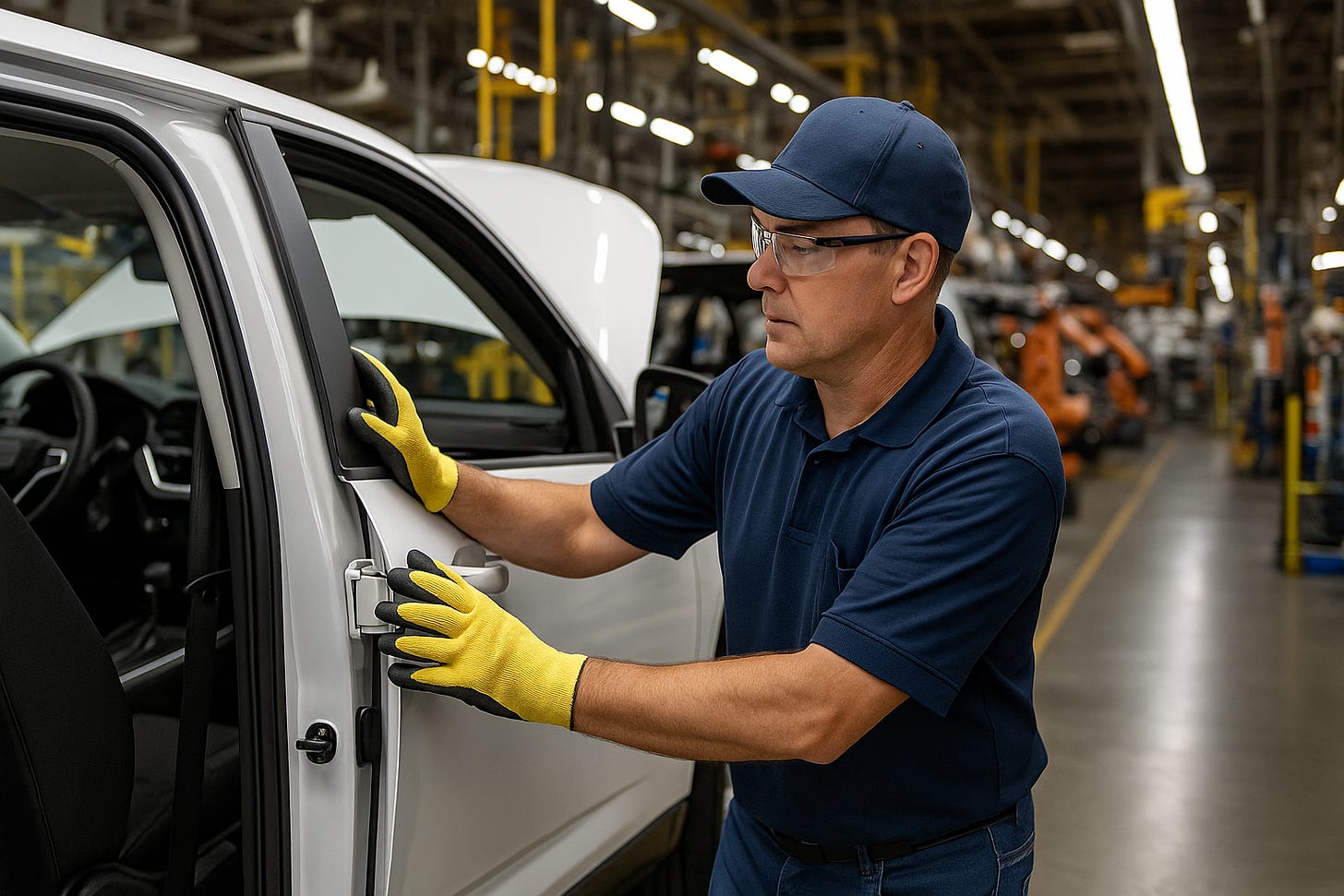Why Most Managers Miss the Real ROI of Safety
Direct Costs vs. Indirect Costs
Hello and Welcome to this week’s edition of Small Business Safety Pro.
This week I want to look at the reason most managers misunderstand the true return on investment (ROI) of safety improvements.
Key points at a glance:
Accidents come with increased costs for your business, both direct costs which are more obvious, and indirect costs, which can be harder to see and quantify but are typically greater than direct costs.
The top 3 ROI benefits of improved safety programs are increases in operational efficiency and employee morale and retention, and a decrease in waste and liability costs.
You can improve the ROI of your safety programs by doing a thorough review of current workplace hazards, improving your reporting process and getting employee buy-in for safety initiatives.
When most managers think about the cost of an injury, they understandably look at the direct costs. These are costs that are easy to see, easy to quantify and easy to put into a presentation or cost equation.
But what most managers fail to see is the indirect costs that come from an accident. These are costs you may not immediately recognize, but have a negative effect on your bottom line. These indirect costs can be 2-4x higher than the direct costs, and are completely avoidable.
In fact, the Institute for Work and Health estimates that for every dollar invested in Health and Safety initiatives, companies typically save close to two dollars. Estimating the financial return on employers’ investments in the prevention of work injuries in Ontario
Direct vs. Indirect Costs Associated with a Lost Time Accident
Direct Costs (Visible & Insured)
Medical expenses
Increased Workers’ compensation premiums
Equipment/product damage
Regulatory fines
Indirect Costs (Hidden & Uninsured)
Productivity loss
Training replacement staff
Supervisor/manager time
Delivery delays
Morale drop
Turnover or absenteeism
Administrative overhead
Reputation damage
Hidden ROI #1: Operational Efficiency
Incidents cost your business time and productivity. Better safety programs mean more up time and better production.
One notable example is Alcoa, whose CEO Paul O’Neill introduced a simple safety initiative back in the late 1980s to ensure all employees report near misses immediately and that management must address it as a top priority. He created clear and simple systems for reporting and empowered front line workers to stop production if they saw a hazard. Importantly, he also required managers to respond to safety concerns quickly and transparently.
This simple change dramatically reduced injury rates in the company, resulted in fewer work stoppages due to injuries, increased employee engagement and improved communication between departments as a result of clearer, more direct reporting channels.
Hidden ROI #2: Employee Retention and Morale
Safe workplaces feel more organized, professional, and respectful. Employee retention and morale improves drastically when employees feel safe and that their concerns will be heard.
NextEra Energy implemented Behavioural Based Safety program in the early 2000s which emphasized peer-to-peer safety observations, worker participation in safety committees and hazard assessments, and positive reinforcement favoured over punitive measures. These changes gave workers ownership in the process, which is absolutely key to getting real buy-in to your safety program.
Both injury and turnover rates were significantly reduced, and worker engagement and morale improved. NextEra Energy became one of the “Best Companies to Work for” in the utilities industry.
Hidden ROI #3: Reduced Waste and Liability
Proactive safety prevents waste of materials, time, and money.
In the mid 2000s, Toyota began placing even greater emphasis on integrating safety and quality control by proactively identifying ergonomic risks that contributed to repetitive stress injuries, redesigned workstations to improve safety and precision and trained their supervisors to recognize that safety lapses were often a harbinger of deeper process problems.
Making manual workstations more ergonomic led to less worker fatigue, increased consistency in part placement and torque application, which led to reduced defect rates and faster cycle times.
As a result, these safer workstations didn’t just lead to reduced injuries, they were a catalyst for better precision, fewer re-works and increased quality scores.
Where to go from here?
So how can you get a boost in ROI from an improved safety program?
Start by doing a thorough review of potential hazards in your workplace and look for ways to address them.
Improve your reporting processes and train your managers to treat workplace hazards seriously and address them as quickly as possible.
Get employees on board by giving them a voice and some control over the safety programs designed to protect them. You’ll be surprised how quickly you can get buy-in when safety is something employees are deeply involved in, rather than something that is dictated to them.
We’ve covered a lot today, that’s all for this week.
Small Business Safety Pro is published every Tuesday on LinkedIn and Substack.
If you enjoy this content, I also ghostwrite thought leadership articles for safety professionals to help build their online presence and attract more opportunity. Message me for more details.
Cheers,
Dan.



